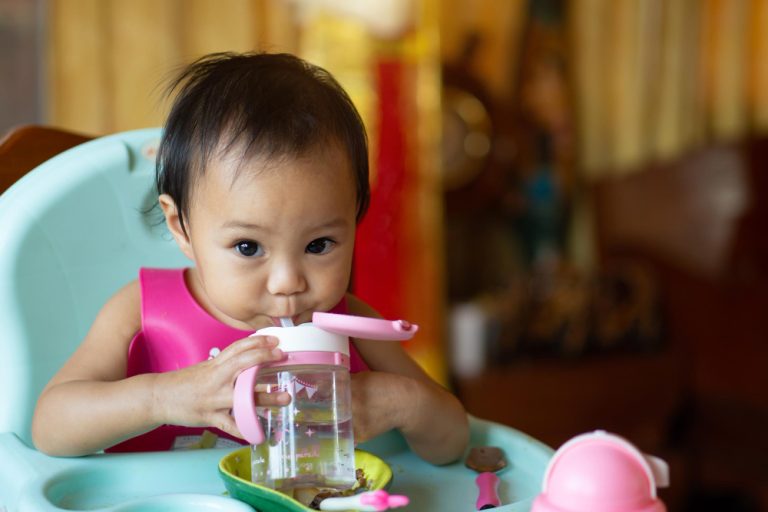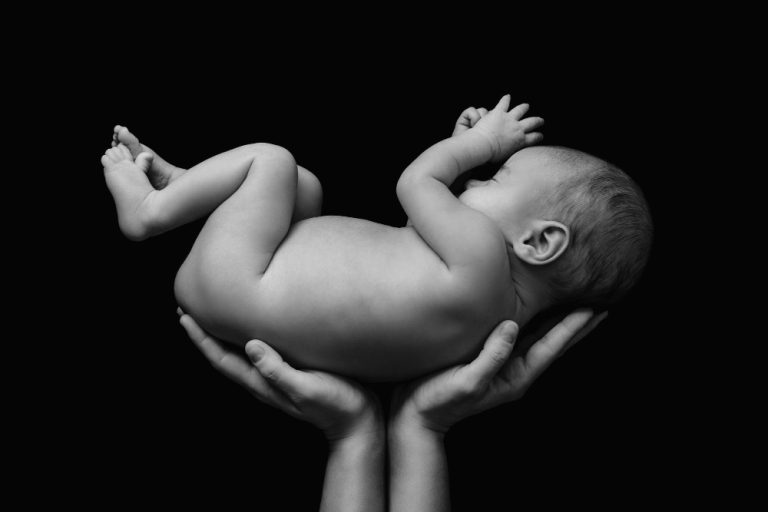Why Do Babies Cry When Born? Decoding Your Baby’s Cries
Have you ever found yourself in a whirlwind of confusion when trying to decipher your newborn’s cries? Do you wonder why do babies cry when born? As a new parent, understanding the nuances of your baby’s cries can be both challenging and overwhelming. The truth is that crying is your baby’s primary form of communication, and each cry carries a unique message waiting to be decoded.
In this comprehensive guide, we delve into why do babies cry when born, the intriguing world of infant cries, and uncovering the reasons behind those precious little wails. From hunger cues to discomfort signals, we will equip you with the knowledge to interpret your baby’s cries better and respond effectively to their needs.
- Unravel the mysteries behind why babies cry when they are born
- Discover practical tips to soothe and calm your little one
- Learn about the varied crying patterns of newborns
- Gain valuable insights to address your baby’s needs confidently
Prepare to navigate the emotional rollercoaster of parenthood armed with the expertise to comfort and nurture your bundle of joy.
Why Do Babies Cry When Born?

As new parents, it’s natural to feel a bit overwhelmed when your newborn baby starts crying. Understanding why babies cry and how to comfort them is essential for building a strong bond and ensuring their well-being.
In this article, we will explore the top reasons why do babies cry when born and provide practical tips for soothing them.
Crying is a baby’s way of communicating their needs and discomforts. It’s their only form of language at this stage, and deciphering what they’re trying to tell you can be a bit of a puzzle. By paying attention to their cries and identifying the underlying reasons, you can better meet their needs and provide the comfort and security they crave.
This article will discuss various factors that may trigger crying in newborns. These include hunger, fatigue, a dirty diaper, discomfort due to their internal temperature, and pain.
Understanding these reasons and learning how to address them will help you navigate this challenging but rewarding stage of parenthood with confidence and ease. So, let’s dive in and decode your baby’s cries together!
Why Do Babies Cry?

Babies communicate their needs through crying, sometimes leaving new parents puzzled and concerned. Understanding the reasons behind a baby’s cry is crucial for parents to respond and provide comfort to their little one effectively.
Here are the most common reasons why babies cry:
Hunger
- One of the primary reasons a baby cries is because they’re hungry.
- As their stomachs are small and need frequent feedings, it’s important to recognize hunger cues such as sucking on hands or rooting.
- Breastfeeding or bottle-feeding can quickly alleviate their discomfort.
Fatigue
- Babies can easily become overtired, leading to fussiness and crying.
- Establishing a consistent sleep routine is essential to ensure they get enough rest.
- Gentle rocking, soft lullabies, or swaddling can help soothe and calm a tired baby.
Dirty Diaper
- Another common reason for crying is the discomfort caused by a wet or dirty diaper.
- Regular diaper checks and timely changes are necessary to keep the baby comfortable.
- Cleaning the diaper area thoroughly and using a diaper rash cream can help prevent irritation.
Internal Temperature
- Babies are highly sensitive to temperature variations.
- They might cry if they feel too hot or too cold.
- Adjust the room temperature accordingly and dress them in layers to maintain a comfortable environment for your little one.
Pain
- Pain or discomfort caused by various reasons, such as colic, teething, or gas, can cause a baby to cry inconsolably.
- Gently massaging the baby’s tummy, using teething remedies, or consulting a healthcare provider for additional guidance can provide relief.
By considering these reasons, parents can promptly address their baby’s needs and provide the necessary comfort and care. It’s important to remember that each baby is unique, and understanding their individual cues and preferences can help alleviate crying and promote a calm and contented baby.
Remember, responding to your baby’s cries with love, patience, and attentiveness is crucial for their overall well-being and development.
Hunger or Overfeeding

Babies cry to communicate their needs, and one of the most common reasons for their cries is hunger or overfeeding. Parents must understand the signs of hunger cues and respond promptly to ensure their baby’s well-being.
Newborn babies have small stomachs and need to be fed frequently. Signs of hunger include sucking on their hands or fingers, smacking their lips, or turning their head towards the breast or bottle. If a baby is not fed when they’re hungry, they may become increasingly fussy and agitated, leading to inconsolable crying.
On the other hand, overfeeding a baby can also cause discomfort and crying. When a baby is fed more than their stomach can handle, they may experience bloating, gas, or even spit up. This can lead to discomfort and distress, resulting in crying spells.
To address hunger or overfeeding concerns, it’s important to establish a feeding schedule and pay close attention to your baby’s cues.
Here are some tips:
1. Feed on demand
Respond to your baby’s hunger cues promptly. Look for signs such as increased alertness, rooting reflex, or sucking motions.
2. Recognize fullness cues
Pay attention to your baby’s signals that they’re full, such as turning their head away, closing their mouth, or slowing down their sucking.
3. Practice paced feeding
Allow your baby to control the pace of feeding. Pause and burp your baby halfway through the feeding to prevent overeating.
4. Avoid using food as a soothing mechanism
While breastfeeding or bottle-feeding can provide comfort to a crying baby, it’s essential to differentiate between hunger and the need for comfort.
By being responsive to their hunger cues and avoiding overfeeding, parents can help ensure their baby’s nutritional needs are met while minimizing discomfort and excessive crying. Remember, every baby is unique, and it’s essential to observe and understand their individual feeding patterns to promote a healthy and contented little one.
Fatigue

Fatigue is a common reason why newborn babies cry. As young infants adjust to their new environment, they can easily become tired and overwhelmed, resulting in fussiness and crying. Understanding how fatigue affects babies and having strategies to soothe them can make a significant difference in their overall well-being.
Signs of Fatigue
1. Yawning and rubbing eyes
2. Decreased activity and responsiveness
3. Dull or glazed expression
4. Fussiness and irritability
Tips for Soothing a Fatigued Baby
1. Establish a consistent sleep routine
Create a calm and comfortable sleep environment for your baby. Follow a regular bedtime routine, including bath time, feeding, and gentle soothing activities.
2. Create a soothing atmosphere
Dim the lights, play soft lullabies, and use white noise to create a calming environment for your baby to sleep.
3. Offer gentle rocking and swaying
Hold your baby close and sway gently from side to side. You can also use a baby swing or a rocking cradle to help lull them to sleep.
4. Use a pacifier
Pacifiers can provide comfort and help soothe a tired baby. Be sure to choose an age-appropriate and safe pacifier for your little one.
5. Avoid overstimulation
Limit noise, excessive movement, and bright lights to prevent overstimulation, which can make it difficult for a baby to settle down and sleep.
6. Provide a comfort object
Introduce a gentle and safe object, such as a soft blanket or a stuffed toy, that your baby can associate with comfort and sleep.
Remember, every baby is unique, and it may take some trial and error to find out what soothes your little one’s fatigue. By observing your baby’s cues and responding with patience and love, you can create a nurturing environment that promotes healthy sleep and relaxation.
Dirty Diaper

A dirty diaper can be a common source of discomfort for babies, leading to bouts of crying. It’s important for parents to understand the signs of a dirty diaper and know how to effectively address it to keep their little one comfortable and content.
Here are some practical tips for handling dirty diapers:
1. Recognizing the signs
- Pay attention to cues that indicate a dirty diaper.
- These can include a strong odor, a bulging or sagging diaper, or your baby appearing fussy or uncomfortable.
2. Preparing the changing area
- Before changing your baby’s diaper, ensure you have all the necessary supplies within reach.
- This includes clean diapers, wipes, baby powder (if desired), and a changing mat or clean surface.
3. Clean and gentle technique
- When changing your baby’s diaper, be gentle and use gentle wipes or a damp cloth to clean the diaper area.
- Avoid using harsh soaps or wipes that could irritate your baby’s sensitive skin.
4. Proper disposal
- After removing the dirty diaper, securely wrap it up and dispose of it in a diaper pail or trash bin with a lid.
- This helps to contain any odors and maintain a clean environment.
5. Apply a barrier cream (if needed)
- If your baby has sensitive skin or is prone to diaper rash, consider applying a thin layer of diaper cream or ointment to protect the skin from irritation.
Remember, promptly changing a dirty diaper keeps your baby comfortable and helps maintain good hygiene and prevents diaper rash. By addressing their basic needs, such as a dirty diaper, you can provide your baby with a sense of well-being and promote a calmer and happier state.
Internal Temperature

Maintaining a comfortable temperature for newborns is crucial for their well-being. Babies, especially in their early stages, are more sensitive to changes in temperature and can become fussy or unsettled when feeling too hot or too cold. As parents, it’s important to create an environment that ensures your baby remains cozy and content.
Here are some valuable tips for keeping your little one at an optimal temperature:
Dressing Appropriately
- Choosing the right clothing for your baby is key to regulating their body temperature.
- Dress them in layers so you can easily add or remove garments as needed.
- Keep in mind that newborns often require one more layer than adults to feel comfortable.
- Opt for soft, breathable fabrics like cotton or bamboo, and avoid overdressing your baby, as overheating can lead to irritability and restlessness.
Room Temperature
- Maintaining a suitable room temperature is just as important as dressing your baby appropriately.
- Keep the room comfortably cool in warm weather, aiming for around 68 to 72 degrees Fahrenheit (20 to 22 degrees Celsius).
- During colder months, it’s best to maintain a temperature between 64 and 68 degrees Fahrenheit (18 to 20 degrees Celsius).
- Use a reliable thermometer to ensure accurate measurements, and be mindful of how drafts or direct sunlight may affect the temperature in the nursery.
Swaddling
- Swaddling can provide a sense of security and help regulate your baby’s body temperature.
- Wrap them snugly in a lightweight, breathable blanket, ensuring their face remains uncovered.
- Swaddling can mimic the coziness of the womb and promote better sleep patterns.
Monitoring
- Regularly check your baby’s body temperature by feeling their skin.
- A warm belly and little perspiration indicate they are at a comfortable temperature.
- If their skin feels excessively hot or cold, adjust their clothing or the room temperature accordingly.
Remember, every baby is unique, and what works for one may not work for another. Pay attention to your baby’s cues and adjust accordingly. By providing a comfortable environment and monitoring their temperature, you can help ensure your baby feels content and secure.
Pain

Pain can be one of the reasons why babies cry. Common sources of pain for infants include teething and colic. Teething occurs when a baby’s teeth start to emerge through their gums, causing discomfort and sometimes pain. This process can be particularly distressing for babies, leading to fussiness and increased crying.
There are several strategies you can try to relieve a teething baby’s discomfort.
- Massaging their gums gently with a clean finger or a teething ring can provide temporary relief.
- Cold objects, such as a chilled teething ring or a clean cloth soaked in cold water, can also help soothe the gums.
- Additionally, giving them something safe to chew on, like a teething toy, can provide comfort and alleviate the pain.
Colic, on the other hand, is a condition characterized by excessive crying in a baby who appears to be otherwise healthy.
- The exact cause of colic is unknown, but it can cause significant distress for both the baby and their parents.
- Comforting techniques like swaddling, gentle rocking, and carrying your baby in an upright position can help manage colic-related pain.
- Additionally, offering a pacifier or playing calming white noise in the background might help to soothe a colicky baby.
Remember, if your baby’s crying persists or you suspect that their pain might be related to a medical issue, it’s always best to consult with a healthcare provider for guidance. They can help address any concerns and provide appropriate advice or treatment options.
Other Possible Reasons: Why Do Babies Cry When Born

Babies are complex little beings, and their cries can have various meanings beyond the basic needs of hunger, fatigue, or discomfort. It’s essential for parents to be aware of other possible reasons why their baby may cry. By understanding these additional factors, they can better address their baby’s needs and provide comfort and security.
Needing to Be Held
- Babies crave human touch and connection.
- They may cry when they feel a sense of loneliness or separation from their caregivers.
- The simple act of holding and cuddling your baby can provide them with the reassurance and comfort they seek.
- Skin-to-skin contact is particularly beneficial for bonding and soothing a fussy baby.
Seeking Stimulation
- Babies are naturally curious and are constantly learning about the world around them.
- They may cry when they crave sensory stimulation or when they feel bored.
- Providing age-appropriate toys, playing gentle music, or engaging in interactive activities can help stimulate your baby’s senses and alleviate their restlessness.
Feeling Unwell
- Sometimes, a baby’s cries can indicate underlying discomfort or illness.
- It’s crucial to assess if your baby’s cry sounds different or if they display other signs of illness such as a fever, rash, or difficulty breathing.
- If you suspect your baby may be unwell, it’s best to consult with a healthcare professional for proper evaluation and guidance.
Remember, every baby is unique, and their crying patterns may vary. It’s important to observe and understand your baby’s cues and respond with love and patience. By attending to their needs promptly and providing a nurturing environment, you can create a strong bond with your baby and promote their overall well-being.
How to Soothe a Crying Baby

When your baby starts crying, it can be distressing and overwhelming as a parent. However, you can use several effective strategies to soothe and comfort your little one.
Here are some practical tips that can help:
1. Gentle Rocking
- Gently rocking your baby in your arms or using a rocking chair can provide a comforting motion that mimics the womb’s rhythmic movements.
- This gentle sway can help calm your baby and provide a sense of security.
2. Swaddling
- Swaddling involves wrapping your baby snugly in a soft and breathable blanket.
- This technique can recreate the feeling of being in the womb, providing a sense of warmth and security.
- Be sure to swaddle your baby correctly, ensuring their hips and legs have enough room to move.
3. White Noise
- White noise, such as the sound of a gentle fan or a specialized white noise machine, can create a soothing environment for your baby.
- The soft, constant noise can mask sudden sounds and help your baby relax and fall asleep.
4. Comfort Objects
- Introducing a comforting object, such as a soft blanket or a favorite toy, can provide your baby with a sense of familiarity and security.
- Having something familiar to hold onto or cuddle with can help soothe them during times of distress.
Remember, every baby is unique, so it may take some trial and error to find the techniques that work best for your little one. Be patient and responsive to your baby’s cues, and try to create a calm and soothing environment. You can help soothe and calm your crying baby by providing love, comfort, and attentiveness.
The Bottom Line: Why Do Babies Cry When Born
In conclusion, understanding why do babies cry when born is crucial for new parents as it helps us decipher their needs and provide the necessary care and comfort. Throughout this article, we have explored the top reasons behind a baby’s cry and provided practical tips for soothing them.
By being aware of the different triggers of crying, such as hunger, fatigue, dirty diapers, internal temperature, and pain, parents can promptly respond to their baby’s needs. Responding with love, patience, and understanding is vital during this early developmental stage.
It’s important to remember that babies cry as a form of communication rather than manipulation. They express hunger, discomfort, tiredness, or pain through their cries. Parents can establish a strong bond with their babies and ease their distress by providing a nurturing and responsive environment.
Incorporating gentle rocking, swaddling, using white noise, or offering comfort objects can help soothe a crying baby. Additionally, seeking support from healthcare providers, such as a pediatrician or a health visitor, can provide valuable guidance during this challenging stage of parenting.
Remember, responding to your baby’s needs with love, patience, and attentiveness is key. This will address their immediate concerns and foster their emotional and psychological well-being. Parenthood is a learning and evolving journey; with time, you will become more attuned to your baby’s unique cues and needs.
As always, consult with healthcare professionals if you have any concerns about your baby’s health or well-being. With the right support and resources, you can navigate through this oh-so-challenging yet rewarding stage of early parenthood.
Stay patient, stay loving, and embrace the incredible journey of parenthood!
FAQs: Why Do Babies Cry When Born
If you’re worried about your baby’s excessive crying or if it is accompanied by other symptoms, such as poor feeding or lethargy, it’s always important to seek medical advice. Your healthcare provider or pediatrician can help assess your baby’s condition and provide appropriate guidance.
Remember, every baby is unique, and their crying patterns may vary. Trust your instincts as a parent and seek support from healthcare professionals when needed. Providing love, comfort, and responsive care can go a long way in soothing a crying baby and promoting their overall well-being.







